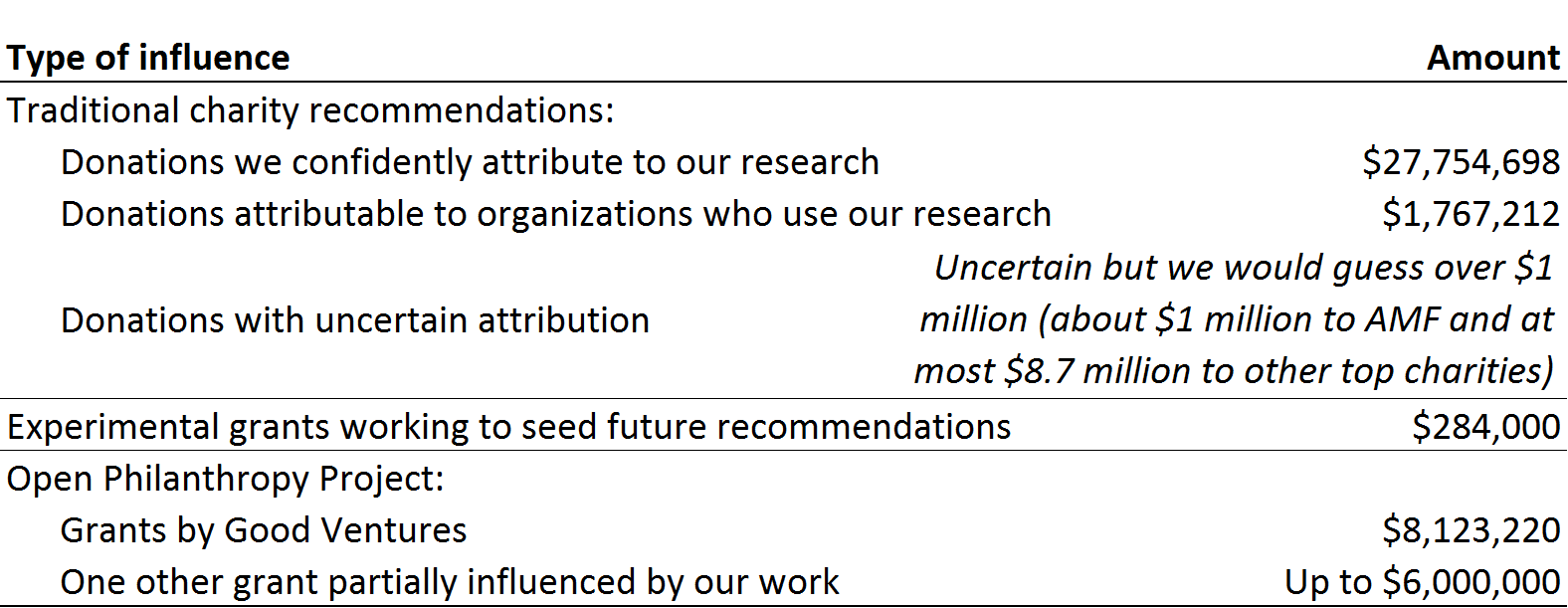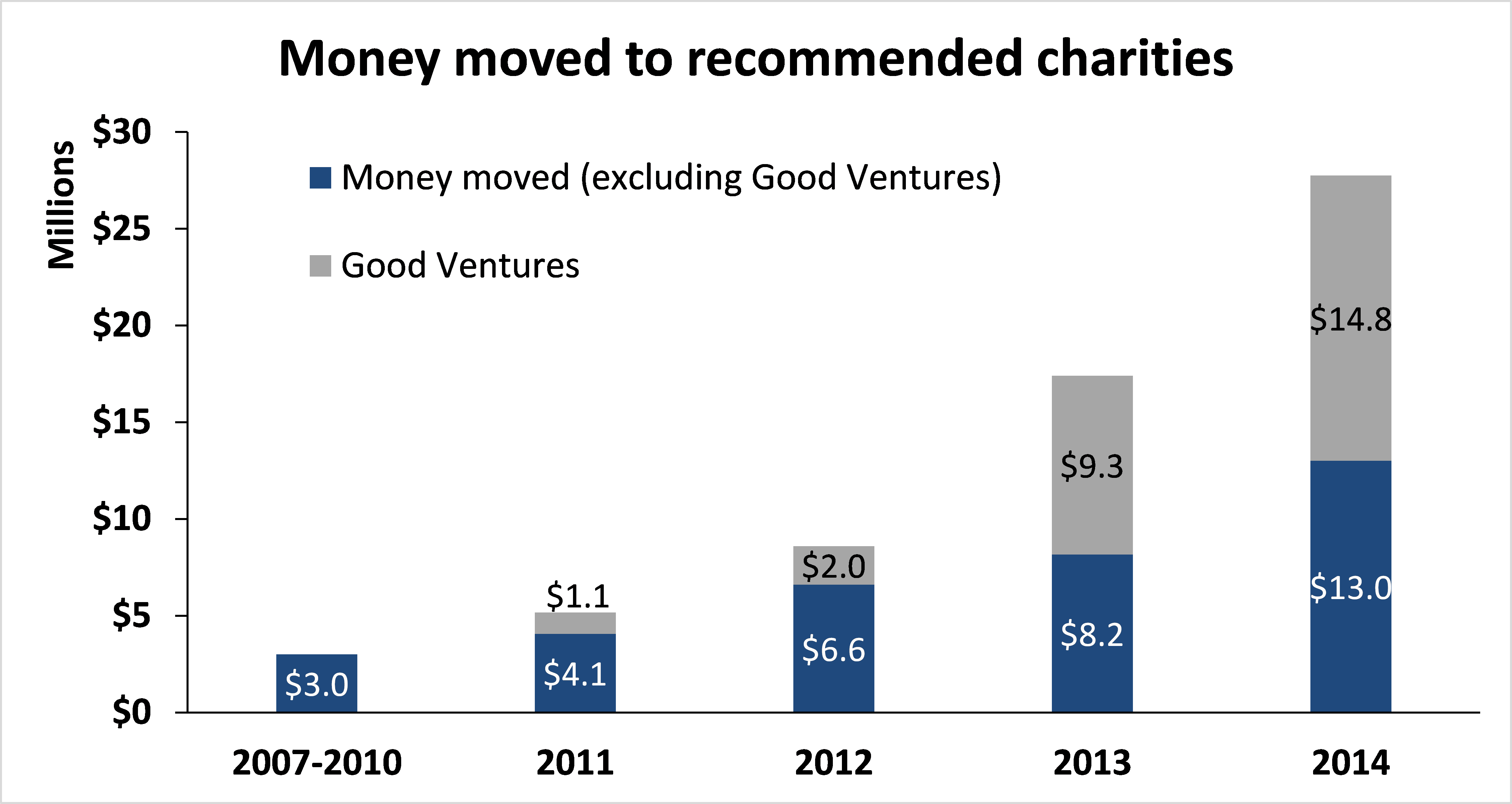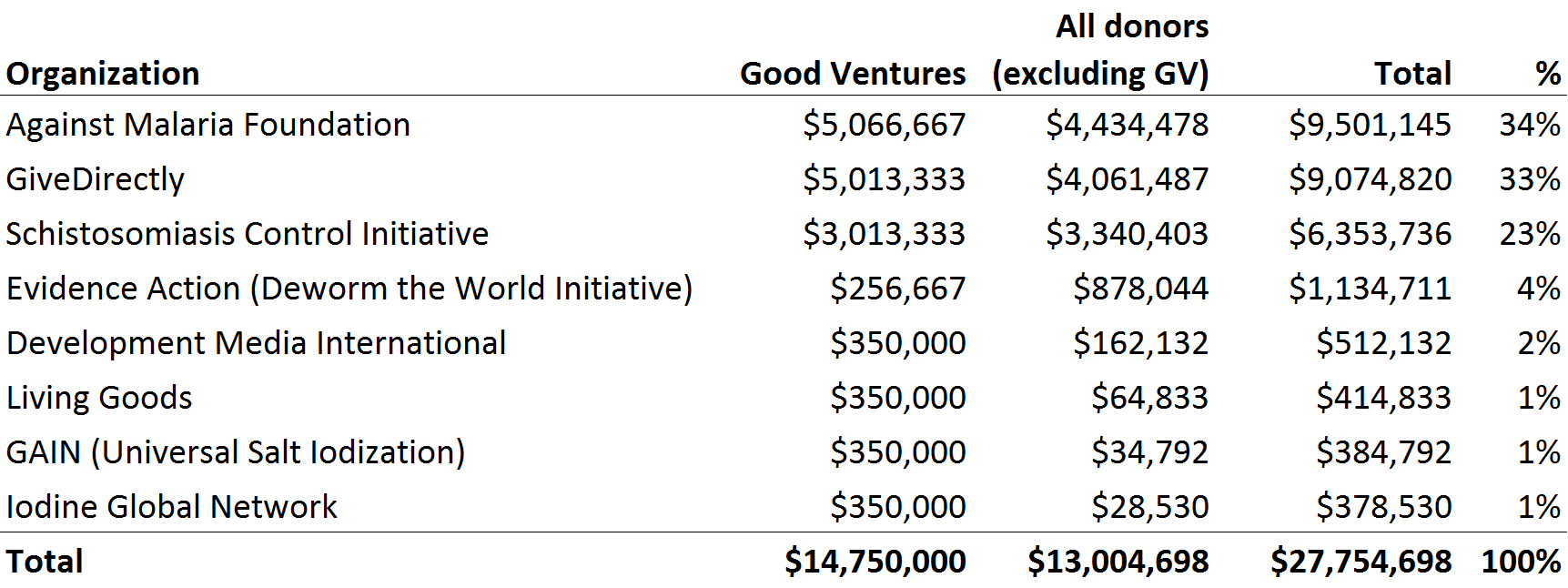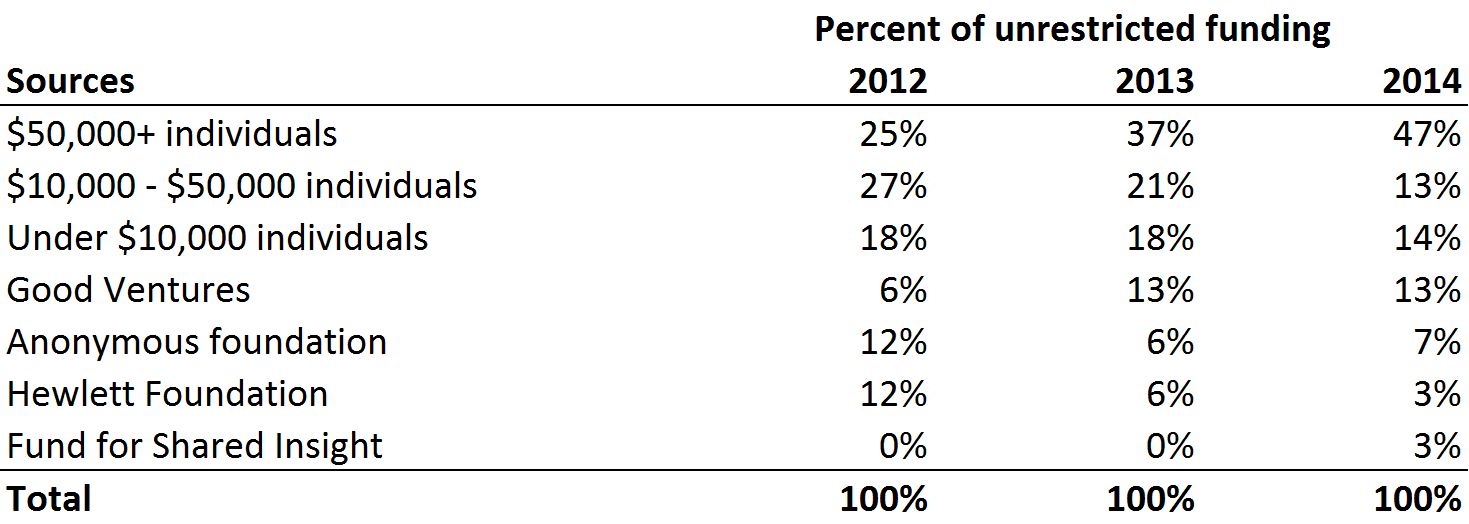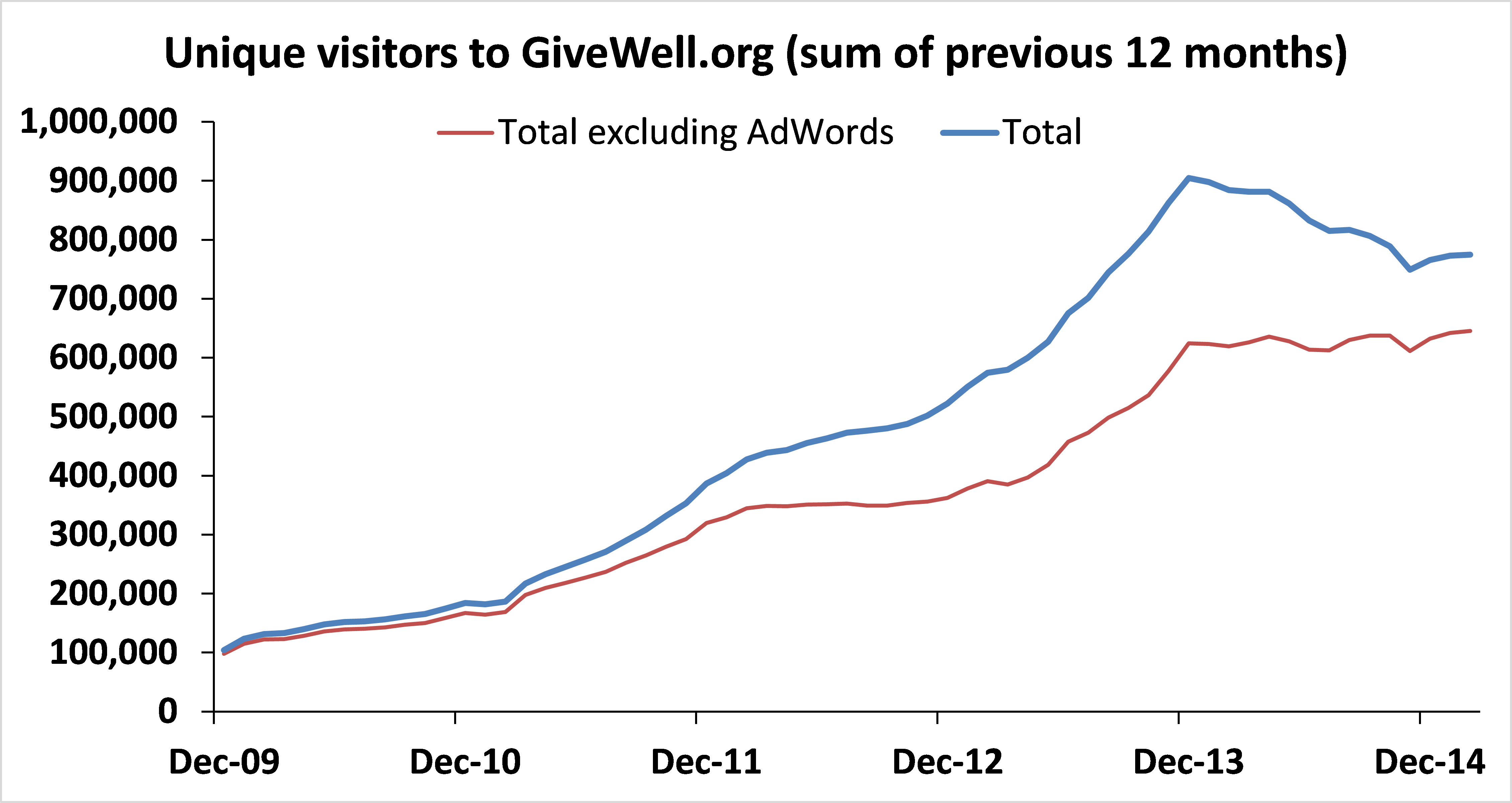Mike and I are committed to giving away a lot of our wealth during the course of our lifetime. It’s very early days, so one of our biggest goals is educating ourselves about the landscape and and context of philanthropy today. For example: What issue areas are important and underfunded? How do we evaluate and compare giving opportunities? What are effective ways to structure grants? What role can or should funders play in a nonprofit’s operations?
That said, we don’t want to wait until we feel 100% informed before we start giving. It’s important for us to learn through doing as well.
When Mike and I met with Cari Tuna, we were immediately struck by how much her approach at the Open Philanthropy Project resonated with us. We sensed that the Open Philanthropy Project’s values aligned with ours: open-mindedness, rigorous analytical thinking, and transparency. We were impressed by their staunch commitment to making the greatest impact possible, through their evaluation framework incorporating importance, tractability, and crowdedness of causes.
We see this partnership as an opportunity to draw on all the knowledge the Open Philanthropy Project team has accrued over the past several years, rather than starting from scratch. We believe it’s a highly efficient way to learn, plus it allows us to help fund important causes sooner than we could on our own.
This partnership is an opportunity for both sides to experiment with a co-funding agreement, and hopefully pave the way for future similar partnerships. The Open Philanthropy Project team has been exceptionally welcoming and it’s clear they are invested in making this successful.
We believe that all people deserve a free, vibrant, and productive life. To support this vision, we identify and champion forward-thinking ideas, and help scale solutions that work. To create significant, sustainable change, we are committed to systems-level thinking and rigorous analysis. We advocate collaboration and transparency to engage a broader community and magnify our impact.

